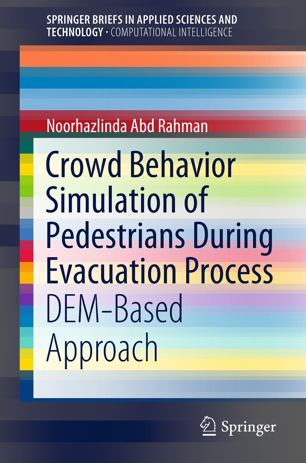

Most ebook files are in PDF format, so you can easily read them using various software such as Foxit Reader or directly on the Google Chrome browser.
Some ebook files are released by publishers in other formats such as .awz, .mobi, .epub, .fb2, etc. You may need to install specific software to read these formats on mobile/PC, such as Calibre.
Please read the tutorial at this link: https://ebookbell.com/faq
We offer FREE conversion to the popular formats you request; however, this may take some time. Therefore, right after payment, please email us, and we will try to provide the service as quickly as possible.
For some exceptional file formats or broken links (if any), please refrain from opening any disputes. Instead, email us first, and we will try to assist within a maximum of 6 hours.
EbookBell Team

5.0
90 reviewsThis book introduces the use of the distinct element method (DEM) in modeling crowd behavior and simulating evacuation processes. Focusing on the mathematical computation of the uncertain behavior of evacuees, which is switching action behavior, it subsequently reproduces the crowd evacuation process under several conjectural scenarios using a DEM-based multi-agent model that has been modified by introducing the switching action behavior. The proposed switching action behavior model describes a person who has to change his/her destination due to the limited space capacity of the designated evacuation area. The change in the destination of a person is determined according to the motion of other individuals in the perception domain during the defined switching action time. The switching action time is formulated in the so-called switching action function, which is described by a convolution integral of the input and unit response functions. The newly developed switching action model is then validated using sensitivity analysis in which the primary focus is the crowd motion and flow of switching action behavior.